Duration 2001-present | ||
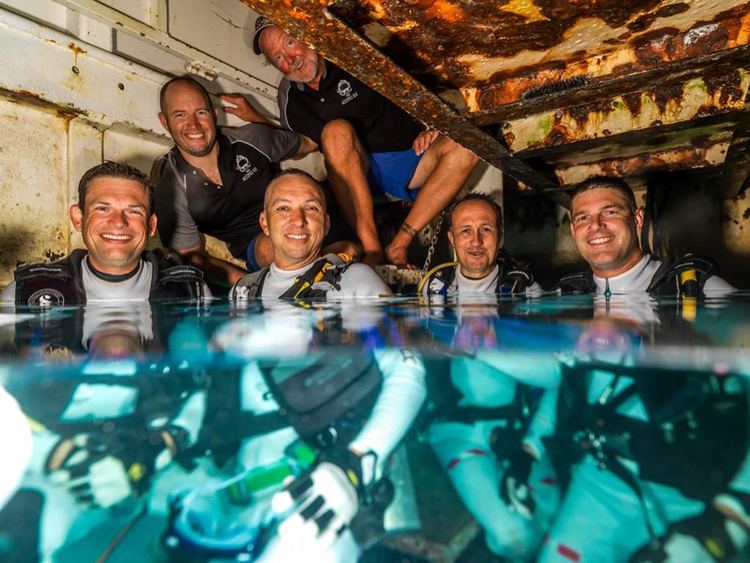 | ||
Goal "To see what extreme environmental challenges astronauts may face in space, and to form solutions by using the ocean, as an equivalent environment on earth" Organization NASA, Florida International University, Aquarius Reef Base Website www.nasa.gov/mission_pages/NEEMO/index.html | ||
NEEMO, an acronym for NASA Extreme Environment Mission Operations, is a NASA analog mission that sends groups of astronauts, engineers and scientists to live in Aquarius underwater laboratory, the world's only undersea research station, for up to three weeks at a time in preparation for future space exploration.
Contents
- Neemo 19 mission day 1
- NEEMO 1 October 2127 2001Edit
- NEEMO 2 May 1320 2002Edit
- NEEMO 3 July 1521 2002Edit
- NEEMO 4 September 2327 2002Edit
- NEEMO 5 June 1629 2003Edit
- NEEMO 6 July 1221 2004Edit
- NEEMO 7 October 1121 2004Edit
- NEEMO 8 April 2022 2005Edit
- NEEMO 9 April 320 2006Edit
- NEEMO 10 July 2228 2006Edit
- NEEMO 11 September 1622 2006Edit
- NEEMO 12 May 718 2007Edit
- NEEMO 13 August 615 2007Edit
- NEEMO 14 May 1023 2010Edit
- NEEMO 15 October 2026 2011Edit
- NEEMO 16 June 1122 2012Edit
- SEATEST II Sept 9 13 2013Edit
- NEEMO 18 July 2129 2014Edit
- NEEMO 19 September 713 2014Edit
- NEEMO 20 July 20 August 2 2015Edit
- NEEMO 21 July 21 August 5 2016Edit
- References
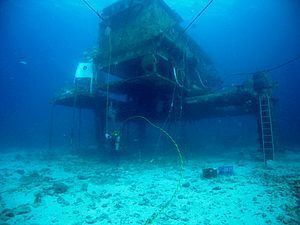
Aquarius is an underwater habitat located 3.5 miles (5.6 kilometers) off Key Largo, Florida in the Florida Keys National Marine Sanctuary. It is deployed on the ocean floor next to deep coral reefs 62 feet (19 meters) below the surface.
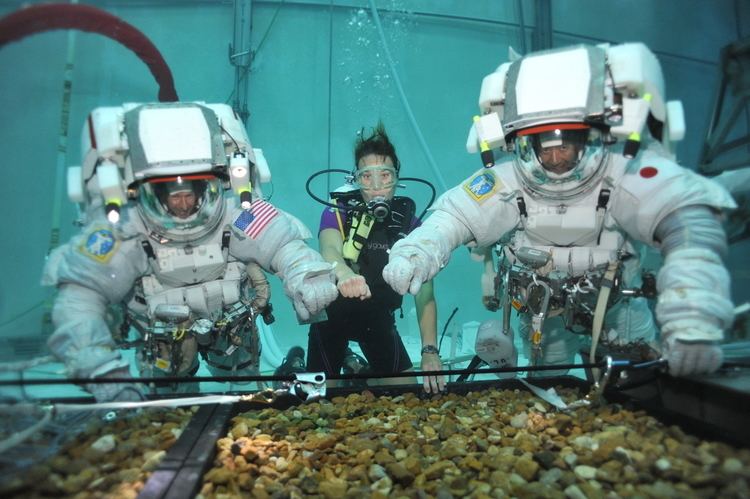
NASA has used it since 2001 for a series of space exploration simulation missions, usually lasting 7 to 14 days, with space research mainly conducted by international astronauts. The mission had cost about 500 million U.S. dollars. The crew members are called aquanauts (as they live underwater at depth pressure for a period equal to or greater than 24 continuous hours without returning to the surface), and they perform EVAs in the underwater environment. A technique known as saturation diving allows the aquanauts to live and work underwater for days or weeks at a time. After twenty four hours underwater at any depth, the human body becomes saturated with dissolved gas. With saturation diving, divers can accurately predict exactly how much time they need to decompress before returning to the surface. This information limits the risk of decompression sickness. By living in the Aquarius habitat and working at the same depth on the ocean floor, NEEMO crews are able to remain underwater for the duration of their mission.
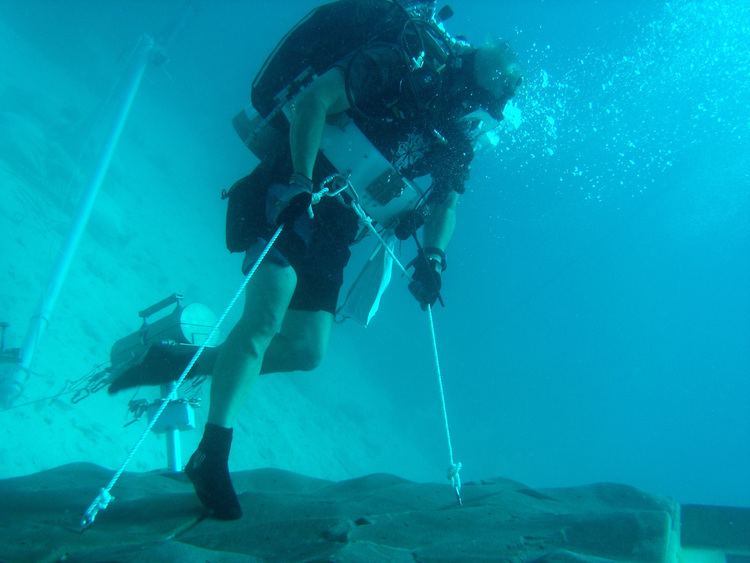
For NASA, the Aquarius habitat and its surroundings provide a convincing analog for space exploration. Much like space, the undersea world is a hostile, alien place for humans to live. NEEMO crew members experience some of the same challenges there that they would on a distant asteroid, planet (i.e. Mars) or Moon. During NEEMO missions, the aquanauts are able to simulate living on a spacecraft and test spacewalk techniques for future space missions. Working in space and underwater environments requires extensive planning and sophisticated equipment. The underwater condition has the additional benefit of allowing NASA to "weight" the aquanauts to simulate different gravity environments.
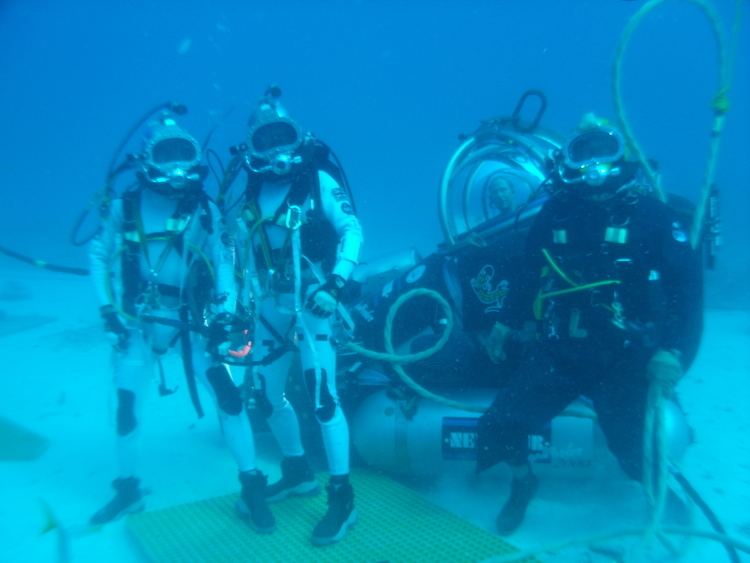
Until 2012, Aquarius was owned by the National Oceanic and Atmospheric Administration (NOAA) and operated by the National Undersea Research Center (NURC) at the University of North Carolina–Wilmington as a marine biology study base.
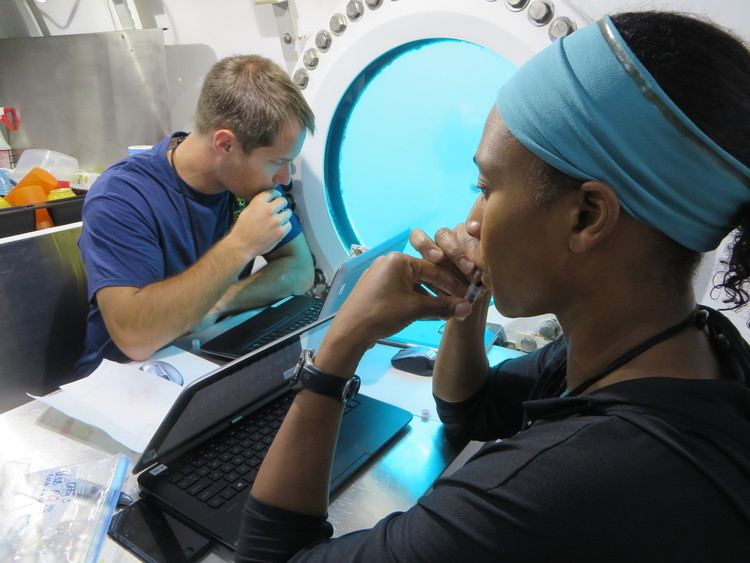
Since 2013, Aquarius is owned by the Florida International University (FIU). As part of the FIU Marine Education and Research Initiative, the Medina Aquarius Program is dedicated to the study and preservation of marine ecosystems worldwide and is enhancing the scope and impact of FIU on research, educational outreach, technology development, and professional training. At the heart of the program is the Aquarius Reef Base.
Neemo 19 mission day 1
NEEMO 1: October 21–27, 2001Edit
NASA Aquanaut Crew:
NURC Support Crew:
NEEMO 2: May 13–20, 2002Edit
NASA Aquanaut Crew:
NURC Support Crew:
NEEMO 3: July 15–21, 2002Edit
NASA Aquanaut Crew:
NURC Support Crew:
NEEMO 4: September 23–27, 2002Edit
NASA Aquanaut Crew:
NURC Support Crew:
NEEMO 5: June 16–29, 2003Edit
NASA Aquanaut Crew:
NURC Support Crew:
NEEMO 6: July 12–21, 2004Edit
NASA Aquanaut Crew:
NURC Support Crew:
NEEMO 7: October 11–21, 2004Edit
NASA Aquanaut Crew:
NURC Support Crew:
NEEMO 8: April 20–22, 2005Edit
NASA Aquanaut Crew:
NURC Support Crew:
NEEMO 9: April 3–20, 2006Edit
NASA Aquanaut Crew:
NURC Support Crew:
NEEMO 10: July 22–28, 2006Edit
NASA Aquanaut Crew:
NURC Support Crew:
NEEMO 11: September 16–22, 2006Edit
NASA Aquanaut Crew:
NURC Support Crew:
NEEMO 12: May 7–18, 2007Edit
NASA Aquanaut Crew:
NURC Support Crew:
NEEMO 13: August 6–15, 2007Edit
NASA Aquanaut Crew:
NURC Support Crew:
NEEMO 14: May 10–23, 2010Edit
NASA Aquanaut Crew:
Aquarius Reef Base support crew:
NEEMO 15: October 20–26, 2011Edit
NASA Aquanaut Crew:
Aquarius Reef Base support crew:
DeepWorker 2000 submersible crew:
NEEMO 16: June 11–22, 2012Edit
NASA Aquanaut Crew:
Aquarius Reef Base support crew:
DeepWorker 2000 submersible crew:
SEATEST II: Sept 9-13, 2013Edit
Space Environment Analog for Testing EVA Systems and Training ( NEEMO 17 ) Designation skipped
NASA Aquanaut Crew:
Aquarius Reef Base support crew:
NEEMO 18: July 21–29, 2014Edit
NASA Aquanaut Crew:
NEEMO 19: September 7–13, 2014Edit
NASA Aquanaut Crew:
Aquarius Reef Base support crew:
NEEMO 20: July 20 - August 2, 2015Edit
NASA Aquanaut Crew:
Professional habitat technicians, Aquarius Reef Base support crew
NEEMO 20 mission objective was to simulate the time-delays associated with sending and receiving commands between controllers on Earth and astronauts on Mars. Additional EVAs will simulate working on the surface of an asteroid, and the use of DeepWorker submersible as an underwater standin for the Multi-Mission Space Exploration Vehicle.
NEEMO 21: July 21 - August 5, 2016Edit
The NEEMO 21 mission was scheduled to begin July 18, 2016 and conclude August 3, 2016; however, the mission start was shifted to July 21, 2016 as a result of unfavorable weather conditions.
NASA Aquanaut Crew:
Professional habitat technicians, Aquarius Reef Base support crew
